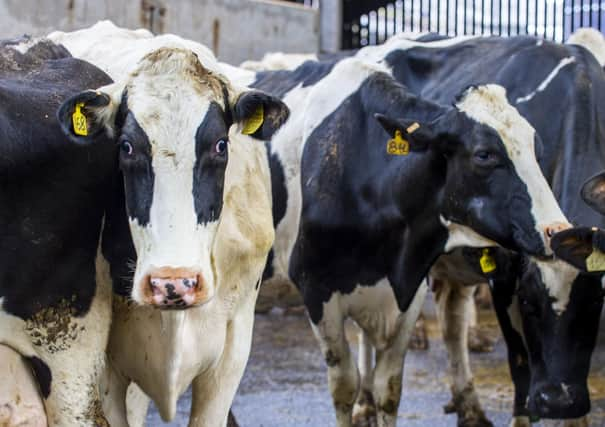Farming: Why a switch to focus on growing protein crops won't work in Scotland - Brian Henderson


Much of this activity has been led by farming organisations who, it has to be said, seem to be ahead of the game in formulating a strategy to meet the triple demands of food production, climate change mitigation and a stabilisation of biodiversity loss.
For a farmer-led initiative, drawn up by people who know the realities of the industry is likely to get much better backing from the sector than a plan drawn up by desk-bound civil servant – and when you’re wanting to change mindsets which have been focused on production for many decades now onto what is a much broader remit, getting buy-in from the target audience counts for a lot.
Advertisement
Hide AdAdvertisement
Hide AdSo, having farmers on the front foot in the quest to design the first purely domestic agricultural policy in almost 50 years has to put the sector in a good place.
But it would be a mistake to assume that there won’t be other voices clamouring for attention as the long, protracted process of drawing all the threads together hopefully enters the final furlong.
For, while some of the true nuances of the arguments on climate change (and, in particular, the over-played contribution which it has been claimed enteric methane emissions from livestock make to global warming) are beginning to gain traction, earlier unsophisticated arguments set in the minds of the public – and also, it would appear, in those overseeing policy development – are proving hard to shake.
And that fact was exemplified in the recommendations included in Scotland’s Climate Assembly report which was published only a few weeks ago.
At the press conference marking its release, it was clear that farming featured fairly heavily in the document, but it was explicitly stated that there was no intention to use the report as a stick with which to beat the industry.
The 81 recommendations included in the report presented to the Scottish Government were drawn up by a 100-storng panel consisting of members from all walks of life selected to be ‘representative of the general populace of Scotland’. Basically the process sees the proverbial man (or woman) on the Clapham (or Sauchiehall Street) omnibus briefed on various aspects of the topic under discussion – and their hopefully better informed opinions noted.
The report recommended that, given the exit from the EU (and the end of the Common Agricultural Policy funding model), the government should work with the farming community to develop a subsidy regime that encouraged farmers to transition to more sustainable land management practices, which should be fully implemented over the next five years.
This could, it claimed, address around a quarter of greenhouse gas emissions in Scotland – and could incentivise the sector to make changes through training, support and funding.
Advertisement
Hide AdAdvertisement
Hide AdFair enough, you might think – but the report added: “We also think this is a fair way to support the transition to sustainable practices in agriculture as it would enable a move away from meat and dairy farming, in ways that give farmers time to adapt and diversify their businesses.”
It also suggested that public procurement should refocus on offering home-grown plant proteins. But just how practical would it be to dramatically increase production of plant proteins in Scotland?
Topography, climate and land quality represent the first major hurdles – with less than ten per cent of Scottish agricultural land being suitable for arable crops. And only a tiny fraction of this land is devoted to growing high protein crops such as peas or beans as climatic limitations and the lack of input from breeding companies mean the crops are difficult to both grow and harvest, making them economically risky and unrewarding.
The lack of developed processing facilities and markets are other serious drawbacks.
Taking a wider view, though, the vast majority of Scottish protein comes from grass and forage grown on the 90 per cent of land only suited to such crops which cannot be digested by humans – but which can be converted into human-edible protein by livestock.
And that’s a message which should have been spelled out loud and clear to the Climate Assembly by QMS or whoever was offering specialist advice to the group.
You might say not so much like a case of not being able to see the wood for the trees but perhaps more of not being able to see the protein for the peas…
Comments
Want to join the conversation? Please or to comment on this article.